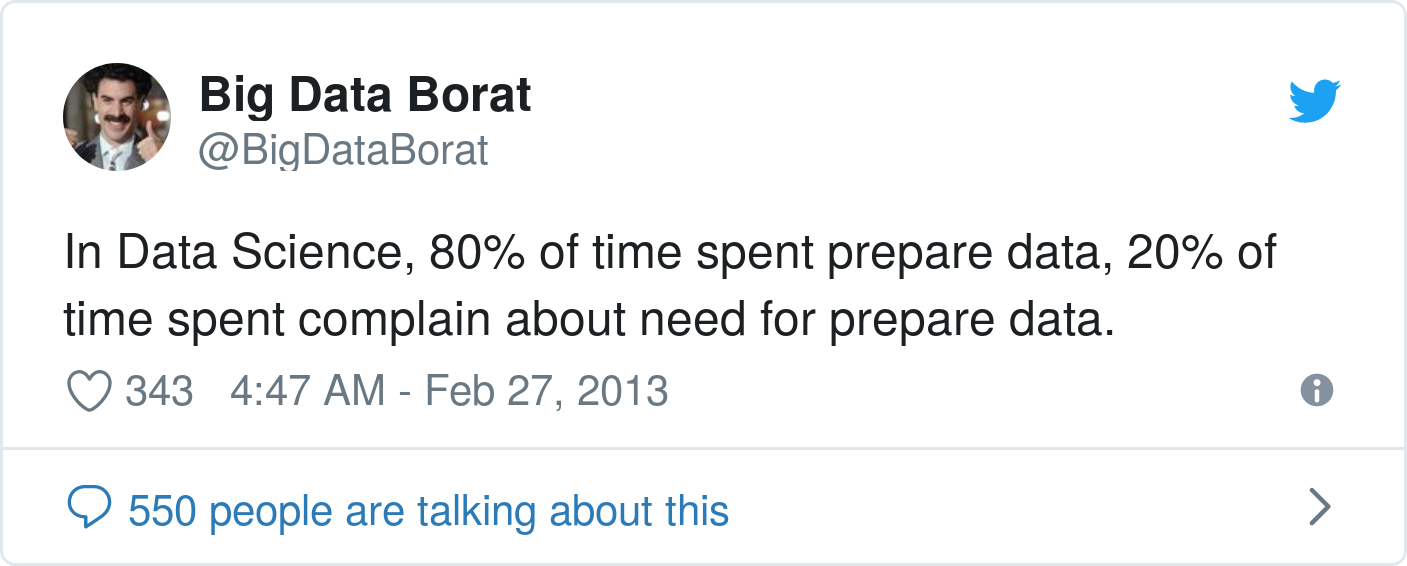Note
Join us to work on reinventing data-science practices and tools to produce robust analysis with less data curation.
It is well known that data cleaning and preparation are a heavy burden to the data scientist.

Dirty data research
In the dirty data project, we have been conducting machine-learning research to see how better statistical models could readily ingest non-curated data, and reduce the need of data preparation for data science. We now have a growing understanding of the problems, theoretical and practical, which lie across statistical and database topics.
Machine learning leads to different tradeoffs than traditional inferential statistics (because it can rely on more powerful model). For instance, we now have a good understanding of the case of missing values: in Le Morvan et al, we showed that with traditional methods, ignorable missingness [1] and “good” imputation are important, but it turns out for prediction, flexible predictors are what matters and they can work on any missingness mechanism.
| [1] | “Missing at Random”, where missingness is independent of the hidden values |
Similarly, we have made good progress on tolerating normalization errors and typos. We find that rather to attempt to deduplicate the entries or fix the typos, it is best to represent similarities and ambiguities to a flexible learning algorithm. The simplest and most reliable methods are implemented in the dirty-cat library, to facilitate the life of data-scientists
Reinventing data science
With this understanding (and even more exciting on-going research), we want to revisit data science. Machine-learning can provide flexible models for many usages of data science. Our goal is to use it to help assembling and analyzing datasets while minimizing human efforts. For this, we need tools that can answer typical data-science questions using machine learning and starting from the raw data, often spread in multiple files or multiple tables of a databases. Building these tools requires data-science research, a new vision of data-science APIs, and careful software crafting.
Join us in this adventure
We have an awesome team, with a great mix of people of different seniority, different expertise (statistics, machine learning, databases, software engineering), sharing offices with the scikit-learn at Inria. But we have too many exciting ideas, so we are growing this team.
A data-science engineer: new software with new ideas
We are looking for someone with a background in data science or numerical Python programming to join us, to help with designing a new data-science library, evolving from dirty-cat, and to help with data-science experimentation for the research.
We like people who care about data, designing good tools, and have vision about data science. We are happy to consider different level of experience. Apply on the job offer.
A post-doc researcher: science joining data engineering to deep learning
We will soon be announcing a post-doc position to join the team for research in this scope. We are interested in questions around learning on relational or tabular data, or learning data integration. We have plenty of ideas to explore around embeddings in databases, learning to aggregate, learning on sets, graph neural networks for databases, or distributional matching for entity and schema alignment. We expect to be borrowing tools (conceptual and practical) from deep learning, but to blending them with techniques from data integration, knowledge graphs, and databases.
The job posting will be out soon, but I am running out of the office right now for vacations (work-life balance also matters to us).
Diversity is important
Our team is not as diverse as I would like it to be (though probably doing better than typical computer-science team). We love diverse candidates. Do not hesitate.
